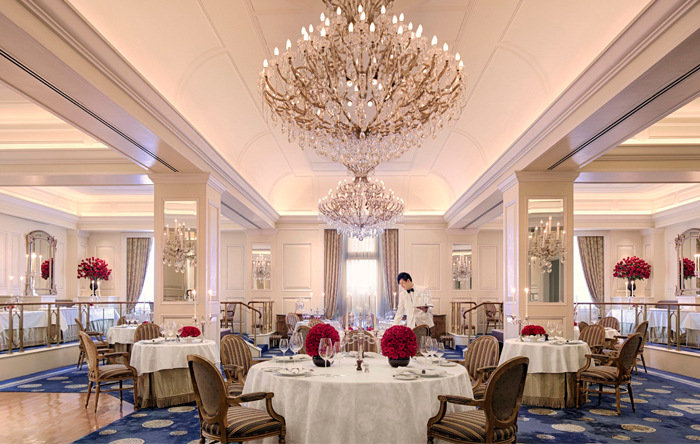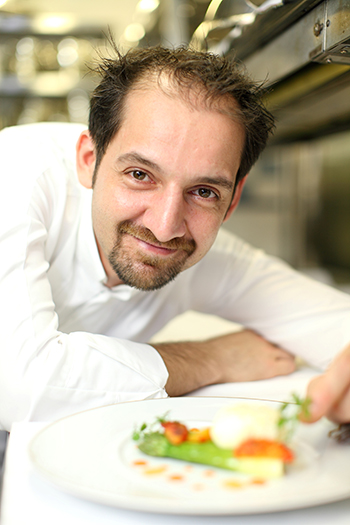
Paris-born chef Rémi van Peteghem took over the kitchen at Forbes Travel Guide Four-Star Gaddi’s, Hong Kong’s oldest French restaurant, two years ago. He spoke with us recently about how he upholds tradition at the establishment, the importance of the season and how cooking in Hong Kong isn’t so different from Paris, after all.
Before starting at Gaddi’s, you spent essentially your entire career in Paris.
It’s my first time outside of Paris, but I have to say it’s not so different, because when you look at the restaurant, it looks like an old French restaurant. I feel very comfortable because I used to work in this kind of restaurant. I know what we can do and what we cannot do.
The major difference is the guest because they don’t expect the same things; they don’t have the same habits about food, cooking temperature — everything like this. So the more difficult thing was to try to fit my food with their requirements, but not to completely change my philosophy.
How do you keep a classic restaurant such as Gaddi’s contemporary and relevant?
We need to keep the spirit of the room, but mainly we need just to have some new ideas in a modern way. I mean, when I cook a dish, I take some classical French recipes and I try to find a way to give it a modern [touch] — maybe it’s with a different balance with the flavor; maybe it’s about cooking method. I try to take out all the fatty ingredients. Now, it’s very important to eat and to be healthy. Some of our guests come quite often to the restaurant, so they cannot eat like [they did] 20 years ago.
But it’s not a revolution. When you eat in Gaddi’s, you can feel it’s very traditional; but the small details don’t look old fashioned. This is the most important thing — to keep an eye on the past but also an eye on the future.
Who are your biggest influences?
I worked in five or six major restaurants, and I take a little bit of each. When I decided to be a cook, I wanted to discover a lot of things, so that’s why I [worked with] some very different chefs. For example, with Guy Martin, it’s very international food. At L’Arpège, it’s very French, based on the product, taking care of how we cook it. And then it was Lasserre and Ledoyen, [which do] classical food but in a modern way, a little bit like what I would like to do here. So I don’t have a specific name to give to you; it’s more a mix of different people.
Where do you find inspiration for your menus?
Everywhere. I can read a paper, watch TV, walk though the market or the street. Sometimes I see something not really related to the food, but maybe it’s a picture, a sound, a smell. But when I create a recipe, it starts, all the time, with a product. The most important thing is the product and the season.
It’s amazing what chefs can get in Hong Kong.
I can cook like I am in Paris. When I arrived here I said, “It’s a French restaurant. I’m French. We’ll do 100 percent French food.” Now, I’ve opened my mind; now I say, “OK, it’s more 90 percent.” I am less focused on French produce and more focused on the best produce.
I take care of the French season and my menu changes quite often. We could do the same dishes in Hong Kong all of the year, because when [a season is] finished in France, or in Europe, it’s starting in Australia or South Africa. So I could keep the menu for the whole year, but that’s the easy way and I don’t want it.
What local foods do you enjoy?
This is one of the best things because we are in the middle of Asia, and if you don’t have time to fly to a certain country, the country will come to you. You cannot be bored with food in Hong Kong because you have everything available. My favorite foods in Hong Kong are Thai, Vietnamese and dim sum.
It’s very rare [for me] to go to a French restaurant. When I want to eat French food, I prefer to do it myself.
Photos Courtesy of Peninsula Hong Kong


